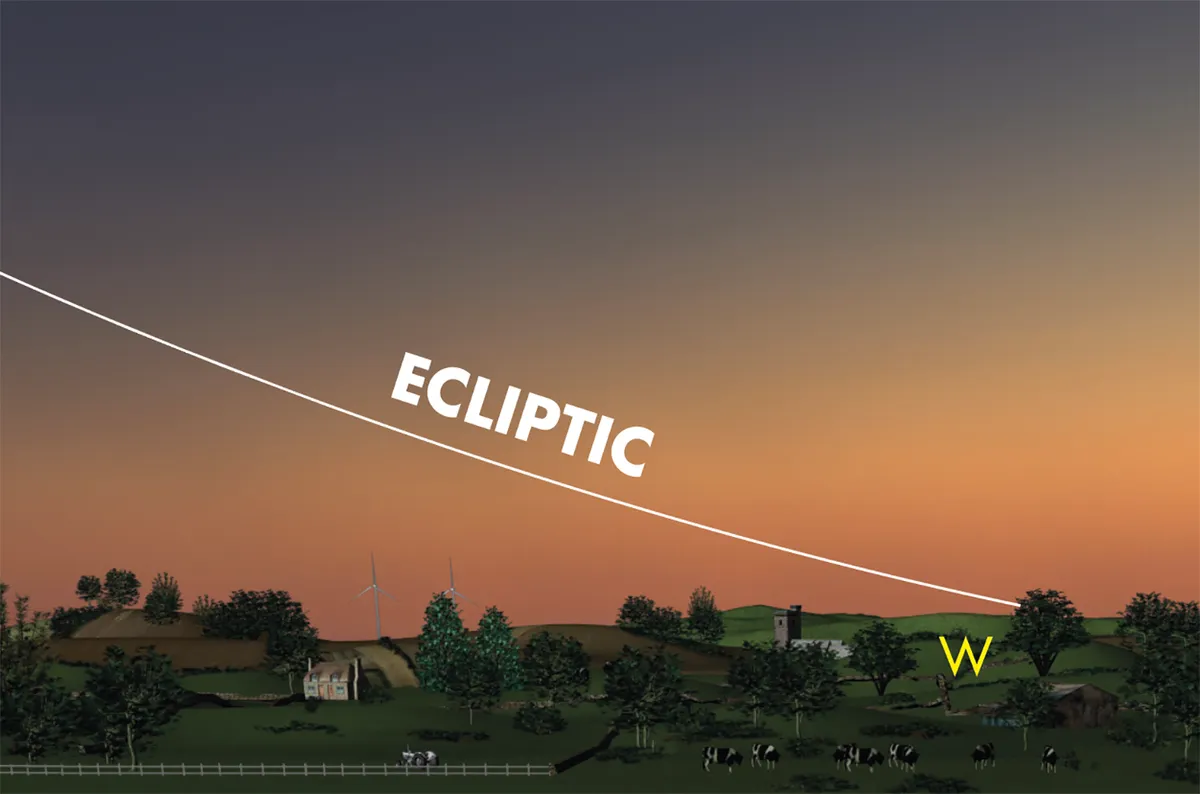You may have heard that there's a mini planet parade occurring this week and into the weekend, marking a beautiful alignment of planets visible in the morning sky.
We all remember the glorious planet parade of January and February 2025, when six Solar System worlds – Venus, Mars, Jupiter, Saturn, Uranus and Neptune – were visible under the dark skies of winter.
Understandably, the chance to relive the planet parade of early 2025 has a lot of people excited.
Get weekly stargazing advice by signing up to receive our e-newsletter and subscribing to our YouTube channel

The headline seems to be that three or more Solar System worlds will be visible in the early hours before dawn over the coming weeks.
Let's unpick exactly what this mini planet parade of May-June 2025 is, and exactly what you'll be able to see.

What you need to know
Over the coming mornings, Venus, Saturn, Neptune and the crescent Moon will be above the horizon just before sunrise in the east.
The key dates for this are 23 May and 24 May, when the Moon will be positioned in the same patch of sky as Venus and Saturn, making for a visible three-body alignment (known as a conjunction or massing).
However, we're no longer enjoying the long, dark nights of winter. Daylight is now breaking much earlier each day, so these morning planets will be fighting against the glare of the rising Sun.
And this is where a bit of safety advice is needed. If you're planning on getting up early to see Venus, Saturn and the crescent Moon rise together, caution should be taken.

These three bodies are rising in the east, and that's exactly where the Sun will be rising just moments later.
Do not observe the rising Sun with naked eye, and it's not advisable to point binoculars or a telescope at the planets, in case you accidentally point them at the Sun.
Doing so could seriously damage your eyesight. Keep your observations of the planets to just your naked eye, and take care not to glimpse the morning Sun when it pokes above the horizon.
That being said, let's take a look at what's coming up, and how visible this mini planet parade will be.
Mini planet parade, 23 May

On Friday 23 May, if you're able to get up early and find a clear eastern horizon, Venus, Saturn, Neptune and a crescent Moon are all above the horizon before sunrise.
The Sun rises around 05:00 BST (04:00 UT) on this date, and Venus, Saturn, Neptune and the Moon will all be above the horizon in the east from about 04:00 BST (03:00 UT), meaning you've got an hour or so to see them.
They will be very low down in the sky, so you'll need a clear view unobstructed by buildings and trees.
While Venus and the crescent Moon will be a glorious sight, Saturn will be trickier to see amidst the oncoming glare of the rising Sun.
Neptune, the most distant planet in the Solar System, is tricky to see at the best of times, and even then it requires binoculars or a telescope to do so.
It will not be visible with the naked eye, and it's not advisable to try and see it this week with a telescope or binoculars, given the dangers of doing so this close to sunrise.
But Venus and the crescent Moon will be a glorious sight, the Moon perched between Venus and Saturn and forming a beautiful three-body alignment.
Mini planet parade, 24 May

On Saturday morning, the picture is roughly the same, with Venus, Saturn and the crescent Moon rising just before the Sun.
While the planets don't seem to change position much from one night to the next, the Moon does.
The Moon appears to track eastwards day after day, so now the Moon will be to the left of both Venus and Saturn.
You'll see the Moon rise as 04:00 BST (03:00 UT) approaches, then Venus will rise above the horizon shortly after.
Saturn will join them – albeit trickier to see – making for another beautiful alignment of three Solar System bodies.
Again, Neptune is too faint and will be swallowed by the dawn twilight.
Mini planet parade, 25 May

This morning, the Moon, Venus and Saturn will all rise at roughly the same time, around 04:00 BST (03:00 UTC).
By now, the Moon is even further east of Venus and Saturn, but if you have a very wide, clear eastern horizon, you could be treated to a beautiful vista of the three bodies in a long line together in the morning sky.
However, the Moon is now a very thin crescent, and difficult to see this close to sunrise.
The coming week

As the mornings progress towards the end of May, the Sun will rise earlier every day.
What's more, the Moon is currently waning, meaning it's becoming a thinner and thinner crescent.
We're approaching 'new Moon' on 27 May, when the Moon is completely un-lit because it's in the same patch of the sky as the Sun.
As a result, the Moon will be harder and harder to see.
From 28 May onwards, the Moon begins to rise after sunrise, slowly making its way back to becoming a predominantly nighttime object.
On the other hand, it's a mixed bag for Venus. The planet is actually climbing high in the sky earlier each morning.
That means the length of time between Venus rising and the Sun rising is getting longer, and by the end of the month, Venus will rise about 90 minutes before the Sun.
However, Venus is becoming dimmer too, so although it's visible in the sky longer before sunrise, it's getting harder to see.
In short, the mini planet parade will be much harder to see by the end of May.
Why planet alignments occur

It's not uncommon to see multiple planets in the sky at the same time, and it's not uncommon to see them together sharing the same patch of sky, either.
The reason for planet alignments takes us all the way back to the birth of our Solar System, about 4.6 billion years ago.
After the formation of the young star we call the Sun, a flat disk of dusty debris – the materials out of which the star formed – remained encircling it.
Out of this dusty disc, gravity began to pull together clumps of material that grew larger and eventually formed the planets and Moons we see today.
As a result, the planets and Moons are all aligned along the same plane surrounding the Sun (more or less).
And so, the planets are always visible in our sky along or near an imaginary line known as the ecliptic.

The ecliptic is the path that the Sun appears to trace across the sky, and is a good marker for telling whether you're observing a star or a planet in the night sky.
Is that point of light in the same part of the sky that the Sun would be during daytime? If so, it could be a planet.
If it's in the opposite part of the sky as the Sun, it can't be a planet.
This is why planet alignments occur and why planets are often seen together, often in a line across the sky.
If you observe or photograph this mini planet parade of May 2025, let us know by emailing contactus@skyatnightmagazine.com

